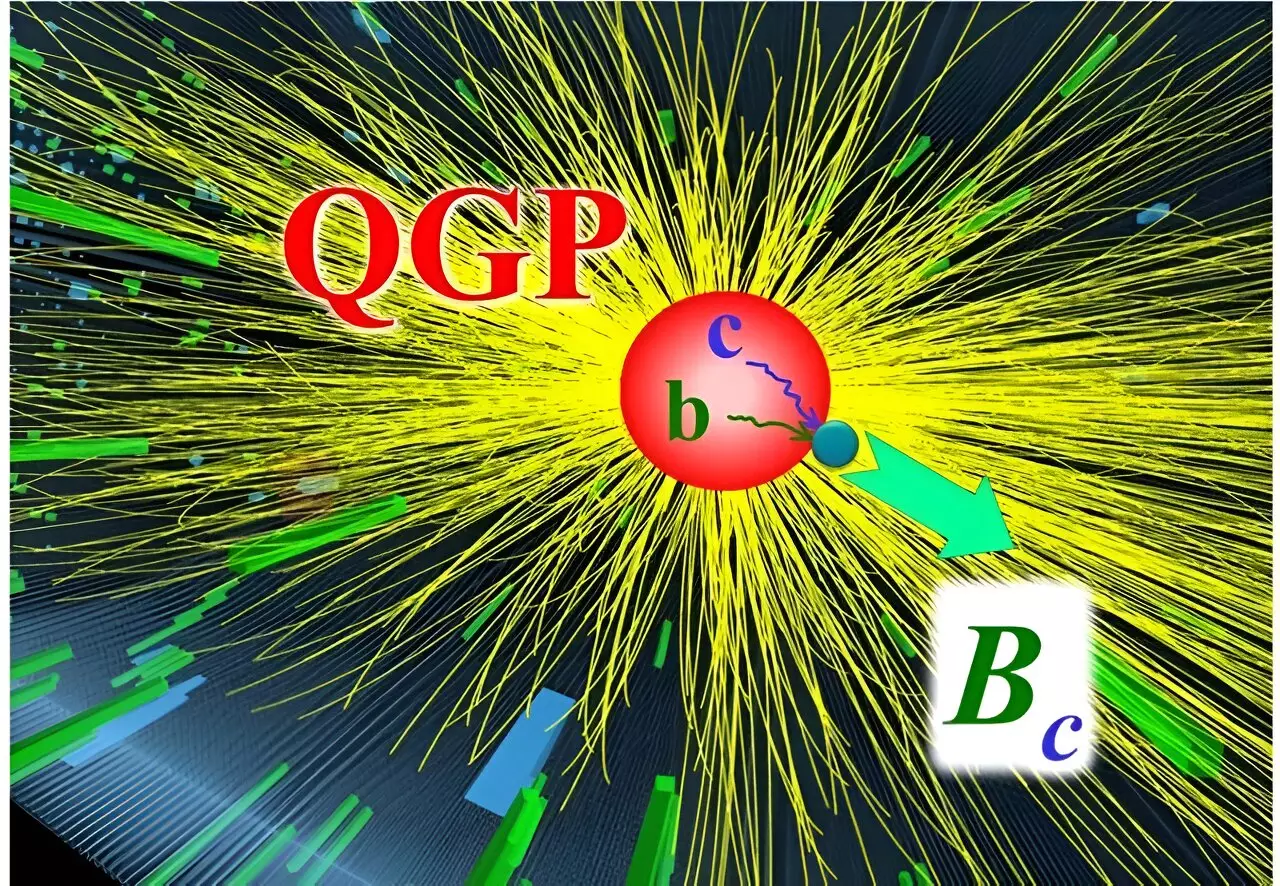Recent research conducted by the HEFTY Topical Collaboration delved into the recombination of charm and bottom quarks into Bc mesons within the quark-gluon plasma (QGP). This investigation aimed to shed light on the kinetics of heavy-quark bound states within the expanding QGP fireball resulting from high-energy heavy-ion collisions.
The researchers developed a transport model to simulate the behavior of heavy-quark bound states in the QGP. This model has previously been utilized to describe the production of charm-anticharm and bottom-antibottom bound states, offering insights into the potential production of Bc particles (charm-antibottom bound states). The study was published in the journal Physical Review C.
In high-energy heavy-ion collisions, a QGP is formed temporarily before decaying into numerous observable particles. Detectors play a crucial role in tracking signatures – specific signals emitted by various types of particles. The detection and analysis of QGP formation necessitate unique signatures distinct from those observed in other collision scenarios like proton-proton interactions.
The researchers conducted theoretical simulations involving the diffusion of charm and bottom quarks through the QGP. They discovered that the recombination of these quarks leads to an increased production of Bc mesons, a phenomenon absent in proton-proton collisions. This enhanced production of Bc mesons can act as a definitive signature of QGP formation.
By utilizing realistic spectra of charm and bottom quarks derived from their diffusion through the QGP, the researchers evaluated the recombination processes. The results pointed to a significant amplification in the yield of Bc mesons in lead (Pb) nucleus collisions compared to proton collisions. Notably, the most substantial effect was observed in head-on collisions of Pb nuclei involving slow-moving Bc mesons.
The theoretical calculations presented in the study align with preliminary data from the CMS collaboration at the Large Hadron Collider (LHC). However, the current data lack sensitivity to slow-moving Bc mesons, underscoring the importance of future data collection in validating this unique QGP signature. Subsequent experiments will play a crucial role in providing a critical assessment of the recombination mechanisms of quarks within the QGP.
The exploration of charm and bottom quark recombination into Bc mesons within the QGP offers valuable insights into the dynamics of heavy-quark bound states in high-energy heavy-ion collisions. By studying unique signatures and conducting theoretical simulations, researchers can further unravel the complexities of QGP formation and enhance our understanding of fundamental particles and their interactions in extreme conditions.


Leave a Reply